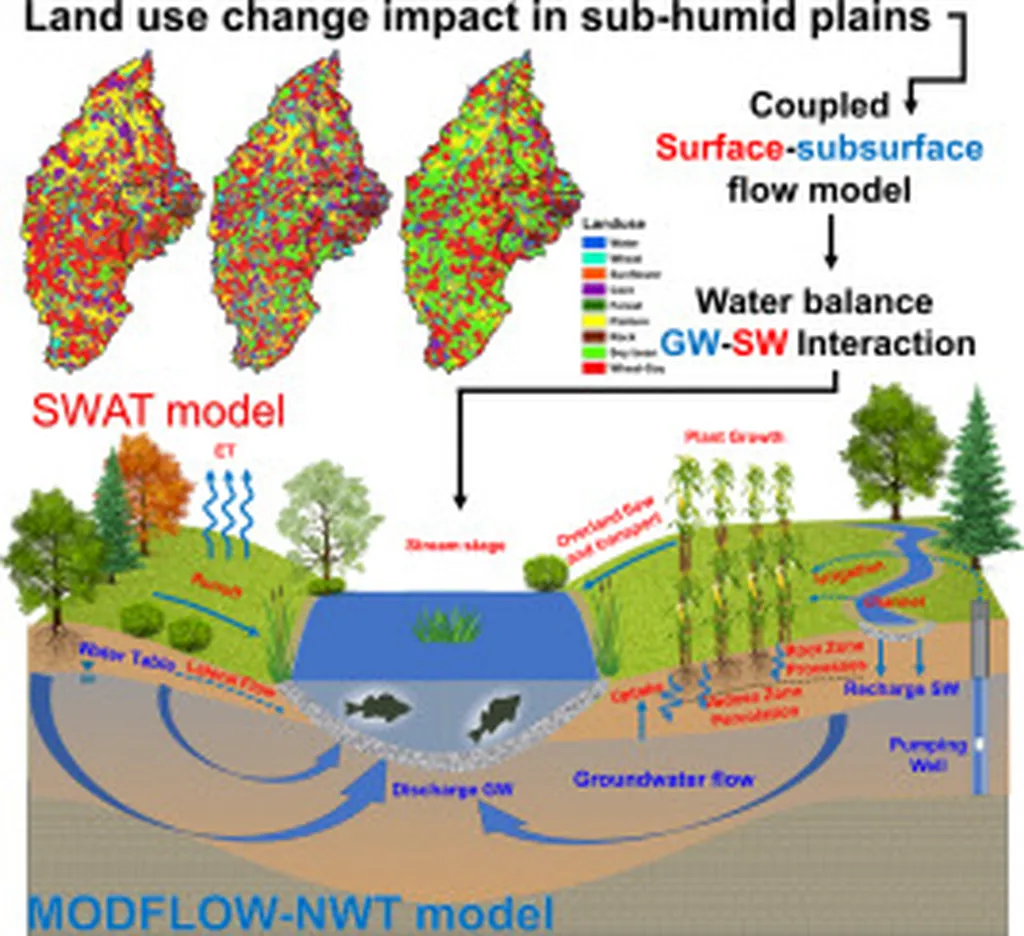In the heart of a drought-prone agricultural region, a critical study has shed light on the seasonal dynamics of groundwater quality, with significant implications for the energy and agricultural sectors. The Hennaya Plain, a vital agricultural hub, is grappling with groundwater quality issues exacerbated by human activities. A recent study, published in the journal *Scientific Reports* (translated to English as “Scientific Reports”), delves into the seasonal variations of groundwater quality, offering insights that could reshape water management strategies.
Led by Abdessalam Laoufi from the Laboratory n°25 Promotion of Water, Mineral and Soil Resources. Environmental Legislation and Technological Choices at the University of Tlemcen, the research employed an innovative approach by integrating the Irrigation Water Quality Index (IWQI) with high-resolution nitrate content analysis. This dual methodology provided a comprehensive assessment of groundwater dynamics across different seasons.
The study collected 39 groundwater samples from wells distributed across the Hennaya Plain, systematically evaluating physicochemical parameters and their seasonal variations. The findings revealed stark contrasts in groundwater quality between the dry and wet seasons. Notably, nitrate contamination, a significant concern for agricultural irrigation, surged from 12.82% to 69.23% of samples exceeding permissible levels as the seasons transitioned from dry to wet. Conversely, chloride contamination decreased, with exceedances dropping from 23.07% to 10.26% of samples.
“The seasonal variability in groundwater quality is a complex interplay of agricultural practices and natural precipitation patterns,” explained Laoufi. “Our findings highlight the urgent need for adaptive management strategies that consider these dynamic interactions.”
The IWQI analysis indicated a marginal improvement in overall water quality during the wet season, despite the escalation in nitrate pollution from moderate to severe levels. This paradox underscores the intricate balance between natural processes and human-induced environmental changes.
For the energy sector, these findings are particularly relevant. Groundwater quality directly impacts agricultural productivity, which in turn influences the demand for energy-intensive irrigation practices. Poor water quality can lead to increased energy consumption for water treatment and pumping, affecting operational costs and sustainability.
“The energy sector must recognize the interconnectedness of water quality and agricultural productivity,” Laoufi emphasized. “By adopting integrated water management strategies, we can mitigate the adverse effects of seasonal variability and ensure sustainable resource use.”
The study’s integrated assessment categorized irrigation water quality as moderate to poor, emphasizing the need for comprehensive groundwater management strategies. These strategies should address seasonal variability and anthropogenic influences on water resources, ensuring long-term sustainability for both agriculture and energy sectors.
As the world grapples with the challenges of climate change and resource depletion, this research offers a timely reminder of the importance of adaptive management. By understanding and addressing the seasonal dynamics of groundwater quality, stakeholders can make informed decisions that balance agricultural productivity, energy efficiency, and environmental sustainability.
The publication of this study in *Scientific Reports* underscores its significance and relevance to a global audience. As the scientific community continues to explore innovative solutions for water management, this research provides a crucial foundation for future developments in the field.

